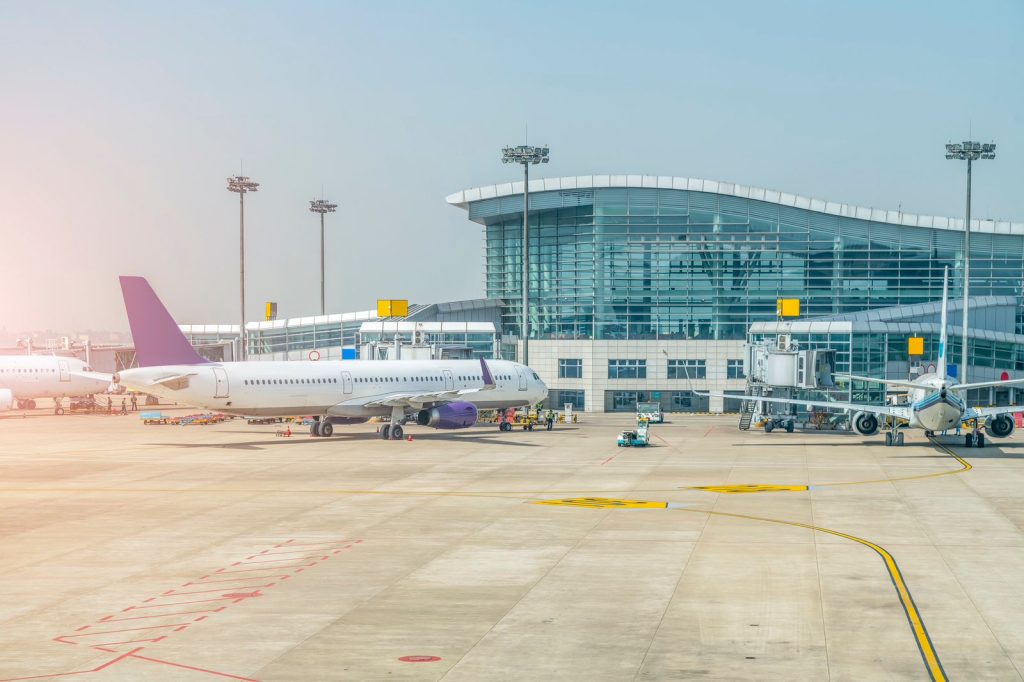
Enhancing African Airports to Attract Business Linkages with Airlines
African airports are at a major juncture. With the rapid growth of air travel across the continent, airports are not only gateways to destinations but also influential hubs for economic development. To harness the full potential of this growth, African airports need to strategically position themselves to attract and retain business linkages with airlines. This involves a range of considerations from infrastructure development to regulatory reforms.
Infrastructure Development
Modernization of Facilities
One of the primary factors airlines consider when choosing an airport is the quality of its infrastructure. Modern airports are equipped with up-to-date facilities that can handle large volumes of passengers and cargo efficiently.
Key Areas for Development:
Passenger Terminals: Modern, spacious terminals with efficient passenger flow and amenities like lounges and shops enhance the overall travel experience.
Runways and Taxiways: Adequate and well-maintained runways and taxiways ensure that airports can handle a variety of aircraft sizes and minimize delays.
Cargo Facilities: Advanced cargo handling facilities are crucial for freight service airlines. This includes secure and efficient systems for handling various types of cargo.
Technological Integration
Technology plays a significant role in streamlining airport operations and enhancing efficiency. Airports that invest in the latest technology can offer better services to airlines and passengers alike.
Technological Considerations:
Automated Check-in Systems: Self-check-in kiosks and mobile boarding options reduce waiting times and improve the passenger experience.
Baggage Handling Systems: Modern baggage handling systems minimize lost luggage incidents and speed up the process of getting bags to passengers.
Advanced Security Systems: High-tech security screening processes enhance safety and reduce delays.
Regulatory and Policy Framework
Streamlining Processes
Regulatory frameworks can significantly impact how attractive an airport is to airlines. Streamlining processes and reducing bureaucratic hurdles can make an airport more appealing.
Important Regulatory Aspects:
Landing Rights and Slots: Simplifying the process for airlines to obtain landing rights and slots can encourage more airlines to operate in and out of the airport.
Customs and Immigration: Efficient customs and immigration procedures ensure that passengers and cargo can move quickly through the airport.
Incentive Programs
Airports can offer various incentives to attract airlines, such as reduced landing fees or subsidies for new routes. For example, Kigali International Airport in Rwanda has successfully attracted several airlines by offering competitive landing fees and support for new routes.
Incentive Types:
Financial Incentives: Reduced fees for landing, parking, and passenger service charges can make an airport more cost-effective for airlines.
Marketing Support: Assisting airlines with marketing and promoting new routes can help them establish a presence in a new market.
Strategic Location and Connectivity
Geographic Advantage
The geographic location of an airport can play a huge role in its attractiveness to airlines. Airports located in strategic positions can serve as important transit hubs. For example, Addis Ababa’s Bole International Airport has leveraged its location to become a major hub connecting Africa and the world.
Geographic Considerations:
Transit Hub Potential: Airports situated between major global destinations can attract airlines looking to establish or expand their routes.
Regional Connectivity: Airports that improve connectivity to other regional destinations can become key players in regional aviation networks.
Network and Alliance Building
Airports that are part of global airline alliances or have strong network connections can offer more benefits to airlines. Being a part of alliances like Star Alliance or SkyTeam can enhance the attractiveness of an airport.
Building Networks:
Partnerships with Airlines: Establishing strong relationships with major airlines and participating in global networks can boost an airport’s status.
Code-Sharing Agreements: Facilitating code-sharing agreements can enhance connectivity and attract more airlines to the airport.
Customer Experience and Services
Enhancing Passenger Experience
A positive passenger experience is important for airlines when choosing an airport. Airports that provide a seamless and enjoyable experience can become preferred destinations for airlines.
Passenger Experience Enhancements:
Comfortable Waiting Areas: Providing amenities such as comfortable seating, charging stations, and entertainment options improves the overall experience.
Efficient Services: Streamlined check-in, security, and boarding processes reduce stress and improve satisfaction.
Supporting Airline Operations
Airports that support airline operations with services such as efficient ground handling and catering can enhance their attractiveness.
Operational Support Services:
Ground Handling Services: Efficient ground handling for baggage, cargo, and aircraft can reduce turnaround times and operational costs for airlines.
Catering Services: High-quality catering options for both passengers and crew can be an additional attraction for airlines.
Environmental and Sustainability Considerations
Implementing Sustainable Practices
Airports are increasingly expected to adhere to environmental sustainability standards. Implementing eco-friendly practices not only improves the airport’s reputation but also aligns with the goals of many airlines focusing on sustainability.
Sustainability Practices:
Energy Efficiency: Investing in energy-efficient technologies and renewable energy sources can reduce operational costs and environmental impact.
Waste Management: Effective waste management and recycling programs help minimize the airport’s ecological footprint.
Meeting Environmental Regulations
Compliance with international environmental regulations is essential for attracting airlines that are committed to sustainability. Airports that adhere to these standards can become preferred partners for airlines with strong environmental policies.
Regulatory Compliance:
International Standards: Adhering to international environmental standards and certifications can boost the airport’s credibility.
Local Regulations: Ensuring compliance with local environmental regulations is also important for maintaining operational licenses and attracting airlines.
Marketing and Promotion
Building a Strong Brand
Effective marketing and branding can significantly enhance an airport’s appeal to airlines. Developing a strong brand identity and promoting the airport’s advantages can attract more airlines and routes.
Marketing Strategies:
Targeted Advertising: Using targeted advertising campaigns to highlight the airport’s strengths and opportunities can attract interest from airlines.
Industry Events: Participating in industry events and conferences can help build relationships with airline decision-makers.
Engaging with Stakeholders
Engaging with stakeholders, including local businesses, government entities, and travel organizations, can enhance the airport’s profile and support its efforts to attract airlines.
Stakeholder Engagement:
Partnerships: Forming partnerships with local businesses and tourism boards can create additional incentives for airlines to choose the airport.
Government Support: Collaborating with government bodies to streamline regulations and offer incentives can boost the airport’s attractiveness.